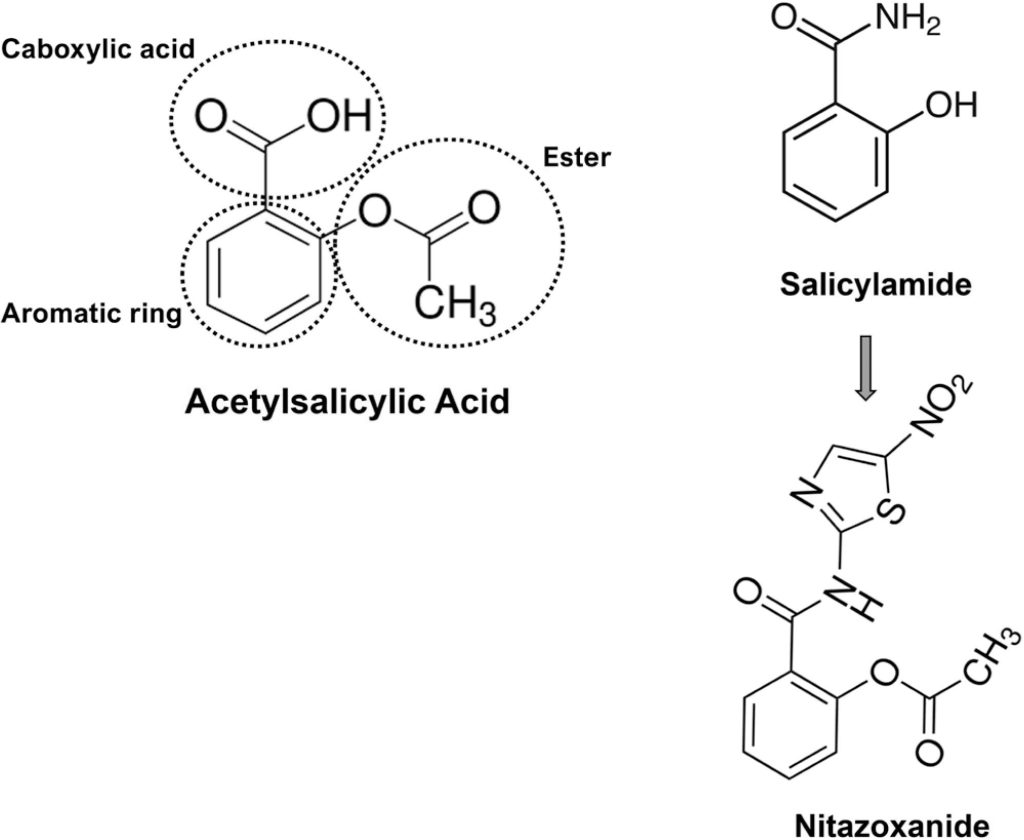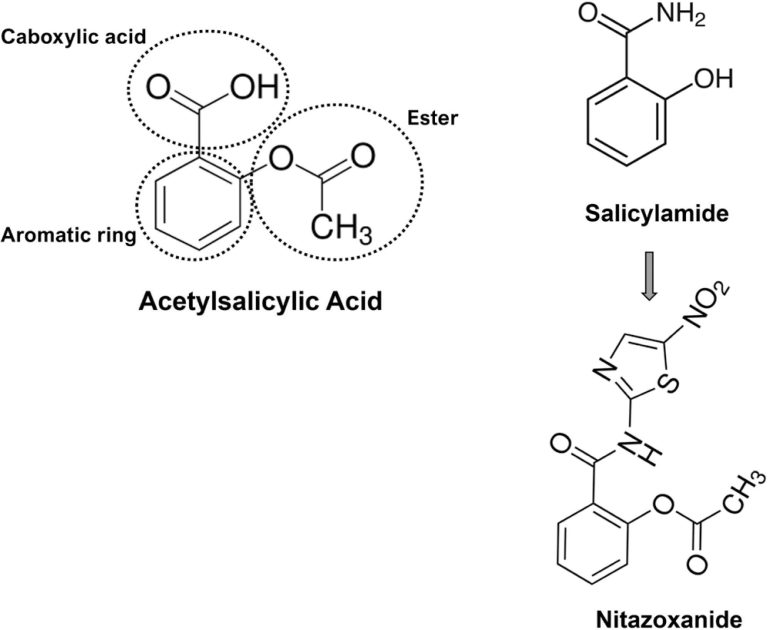einstein (São Paulo). 23/Oct/2025;23:eRC1534.
Nitazoxanide and nonsteroidal anti-inflammatory drugs (NSAIDs): unveiling the connection in immediate hypersensitivity cross-reactions
DOI: 10.31744/einstein_journal/2025RC1534
ABSTRACT
Intestinal worm infections, referred to as helminthiases, represent a significant global health challenge, particularly in low- and middle-income countries. These infections affect millions of people and contribute to malnutrition, anemia, and impaired cognitive development, particularly in children. Nitazoxanide, first described in 1975, was initially developed as a veterinary anthelmintic. It has shown efficacy against various pathogens including Giardia lamblia, Entamoeba histolytica, and Cryptosporidium parvum. Recently, its use has expanded due to its observed in vitro activity against viruses, including coronaviruses. Nitazoxanide, a derivative of salicylamide, combines a nitrothiazole moiety with a salicylic acid moiety. Anaphylaxis, a severe immediate hypersensitivity reaction, may be induced by medications, with nonsteroidal anti-inflammatory drugs being among the most common causes. However, neither immediate hypersensitivity reactio, including anaphylaxis, to nitazoxanide nor cross-reactivity with nonsteroidal anti-inflammatory drugs has been previously reported. This study reports four cases of immediate hypersensitivity reactio to nitazoxanide in patients with non-selective immediate hypersensitivity reactio to nonsteroidal anti-inflammatory drugs. These findings highlight the need for vigilance in monitoring medication reactions and suggest the inclusion of nitazoxanide in the list of medications to be avoided in these patients.
82



